Bestowed with a tropical monsoon rainforest and unique geographical features, Assam has a diverse ecological habitat like forests, grasslands, and wetlands which boost a rich wildlife population. It is also a part of the ‘Eastern Himalayan Biodiversity Region’ where many rare species of animals and birds harbour and sustain their lives. There are five national parks in Assam and 19 wildlife sanctuaries out of which two national parks are UNESCO World Heritage Sites.
The copious jungles of Assam are considered as a wonderland for the wildlife enthusiasts for its exalted as well as endangered animal species. From jungle safaris to birding trails, the wilderness of this state has a lot more to offer than our expectations. From having the largest population of One-Horned Rhinoceros in the world to the highest density of Tigers in India, it has many wild treasures to draw wildlife lovers to its territory. Here is the list of all five national parks in Assam for an incredible wildlife experience.
Top 5 National Parks in Assam
Kaziranga National Park
Kaziranga National Park is a UNESCO World Heritage Site and Tiger Reserve; it is the most famous amongst all the five national parks in Assam. Located in the Nagaon and Golaghat district of Assam, Kaziranga National Park covers an area of 858 square kilometers. It is known for its big five, One-horned Rhinoceros, Tiger, Asian elephant, Wild Water Buffalo, and Swamp Deer. It is also recognized as an “Important Bird Area’ by Birdlife International for the conservation of avian fauna.
Kaziranga National Park is situated on the edge of the Eastern Himalayan Biodiversity Hotspot making it a breeding ground for different wild animals and birds. The national park is divided into four ranges and there is a difference in altitude between the eastern and western range of the park. The vast River Brahmaputra acts as a northern and eastern boundary and there are two more rivers, Diphlu, and Dhansiri that flows through the park.
During winters thousands of people from mainland India and around the world visit this place for jungle safari. Almost two-thirds of the world’s One-horned Rhinoceros population is inside Kaziranga National Park. It is also a healthy breeding ground for the Tigers and there are a total of 110 of them in the wild. This national park is also home to over 1000 Asiatic Elephants, 1400 wild Asiatic Water buffalos, and approximately 500 Swamp Deer.
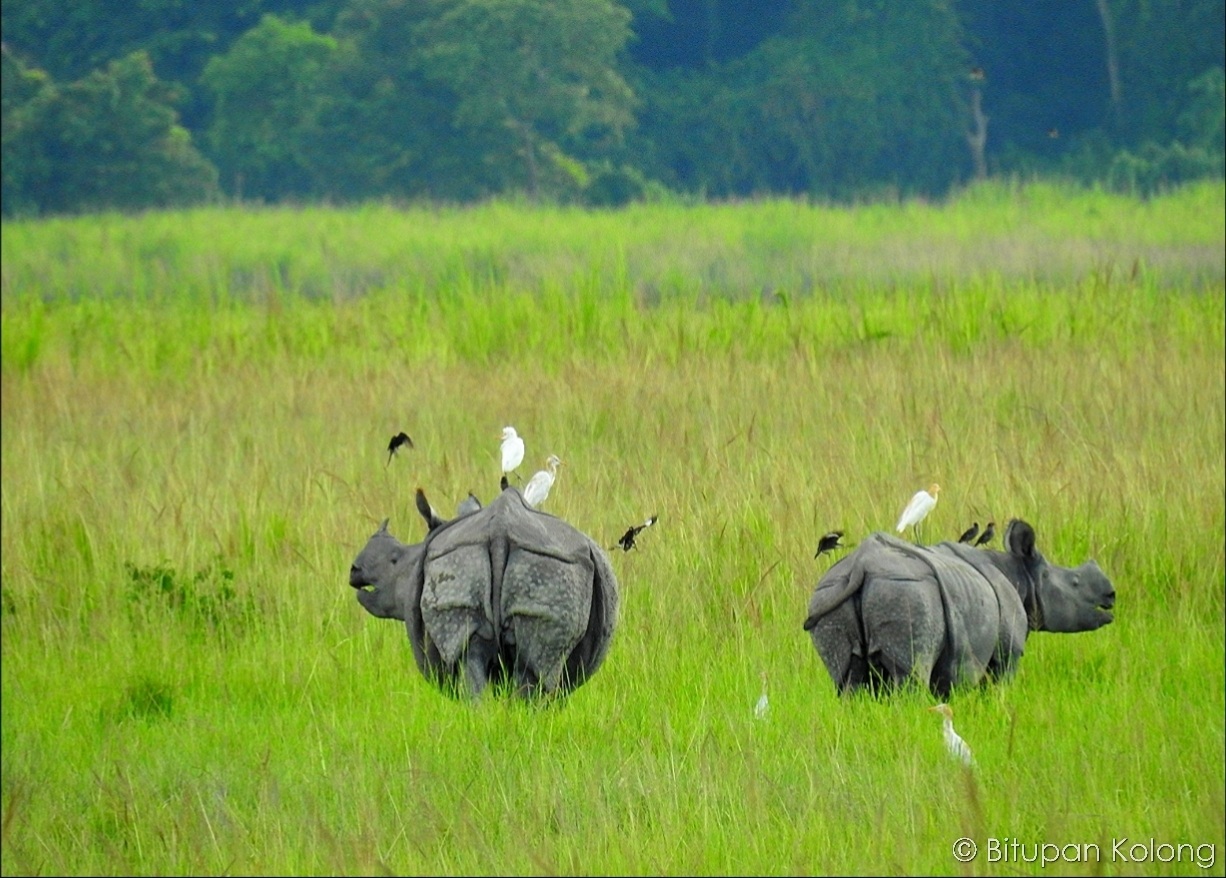
Apart from its big five other dominant mammals found in Kaziranga National Park are Wild Boar, Sambar, Hog Deer, Barking Deer, Hoolock Gibbon, Capped Langur, Indian Leopard, Jungle Cat, Fishing Cat, Asiatic Black Bear, Ganges River Dolphin, and Civets, etc.
Kaziranga is also a renowned birding destination and especially its eastern part is known as Agaratoli Range. Some of the avian species found in the park are Great Hornbill, Wreathed Hornbill, Eastern Imperial Eagle, Bengal Florican, Greater Spotted Eagle, Palla’s Fishing Eagle, Indian Roller, Slender Billed Vulture, etc. to name a few. A visit to this range during the winter season will also acquaint you with a lot of migratory birds as well.
This park also has about 42 different species of reptiles including endangered Gharial and 15 species of turtle including rare Assam Roofed turtle. Amongst the snake family, two of the largest and poisonous snakes in the world like Reticulated Python, Rock Python, King Cobra, Indian Cobra, Russell’s Viper, and Common Krait is also found in Kaziranga.
You can also visit http://kaziranga.assam.gov.in/ to know more.
Best Time to Visit Kaziranga National Park in Assam
October to April is a good time to visit Kaziranga National Park. The park is completely closed during the rainy months from May to September. For birding December to February is the best time. Safari happens twice daily in all the ranges of the park. The first one in the early morning from 7.00 am to 11.30 am and evening from 1.30 pm to 5.00 pm.
For a Tiger enthusiast, January and February are the best time to visit the Kaziranga National Park. During this time there is a higher chance of sighting a Tiger because the forest official burns the grasslands to discourage the growth of tree sapling and forest fire. The tall grassland of Kaziranga is the best habitat for the Tigers and its controlled burning increases the chance of sighting a tiger in the nearby areas.
Read about Camping in Kaziranga National Park – http://blog.kitemanja.com/camping-in-kaziranga-at-camp-nikori/
Manas National Park
Also declared as a UNESCO World Heritage Site, Manas National Park is a Tiger Reserve, Elephant Reserve, Biosphere Reserve, and a Wildlife Sanctuary as well. The landscape of the park is mesmerizing and it includes forested hills, alluvial grasslands, and tropical evergreen forests. This park is known for its rare wildlife and calls it home to the most number of endangered species mentioned in the ‘IUCN Red List’ from India.
Manas National Park is located in two districts of Assam known as Bongaigaon and Barpeta. The park covers an area of 950 square kilometers and got its name from a river that flows down its rugged forest. River Manas is one of the major tributaries of river Brahmaputra and it divides the park between India and Bhutan. The Bhutanese part of Manas is known as Royal Manas Park. Manas National Park is divided into three ranges, the western range is at Panbari, the central at Bansbari and the eastern at Bhuiyapara.
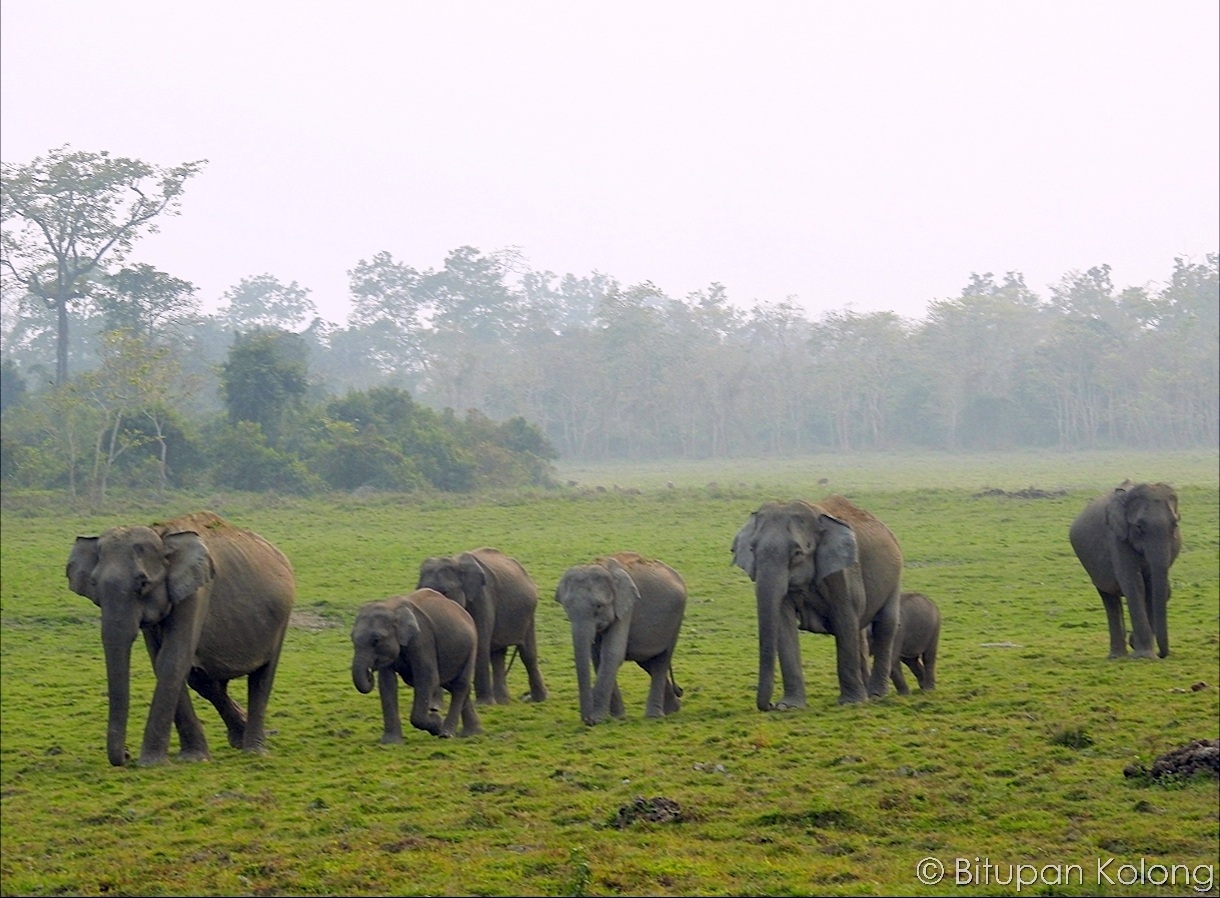
The sanctuary is known for its Elephants, Tigers, Wild Water Buffalos, Capped and Golden Langur, Common Leopard, Clouded Leopard, and Black Panther. The endangered Assam Roofed Turtle is also found inside this national park.
Avian enthusiasts have good chances of sighting Long-tailed Broadbill, Sultan Tit, Brown Oriole, Bengal Florican, Crested Serpent Eagle and Redheaded Trogon, etc inside the park. The park also has the largest population of the world’s rarest Bustard, the endangered Bengal Florican in anywhere in India.
There are about 380 species of Birds, 50 reptiles and 3 species of amphibians inside Manas National Park. Some of the reptiles found in Manas are Tokay Gecko, Asian House Gecko, Frilled Gecko, Bengal Monitor, Brahminy Blindsnake, Burmese Python, Spectacled Cobra, and King Cobra, etc.
Best Time to Visit Manas National Park in Assam
Both summer and winter are preferable times to visit Manas National Park. It is usually open for public from mid-October to May every year. Winter months are good to sight many migratory birds who visit the Manas to breed. At this time birds like Northern Shoveler, Greater Spotted Eagle, Brown Headed Gull and many more can be sighted inside the park. But in winter it is difficult to sight an animal due to dense forest cover grown after the rainy season. During the summer months of March and April the forest officials burn down the elephant grasses and there is maximum visibility of sighting wild animals like Tiger and Leopard etc.
Nameri National Park
Nameri National Park and the Tiger Reserve is located in the foothills of Eastern Himalayas bordering mountainous Arunachal Pradesh. This park is an important place for the conservation of Elephants and the endangered Pygmy Hogs. Nameri National Park is also a natural home to the White Winged Wood Duck, the state bird of Assam.
It comes under Sonitpur district covering about 200 square kilometers and serves as an eastern border of the Assam Valley. Nameri has Tropical Evergreen, Semi-Evergreen and Moist Deciduous forests with open grasslands near the river banks. There are small and big rivers like Jia-Bharali, Diji, Dinai, Doigurung, Dikorai, and Khari, etc. which criss-cross through the park.
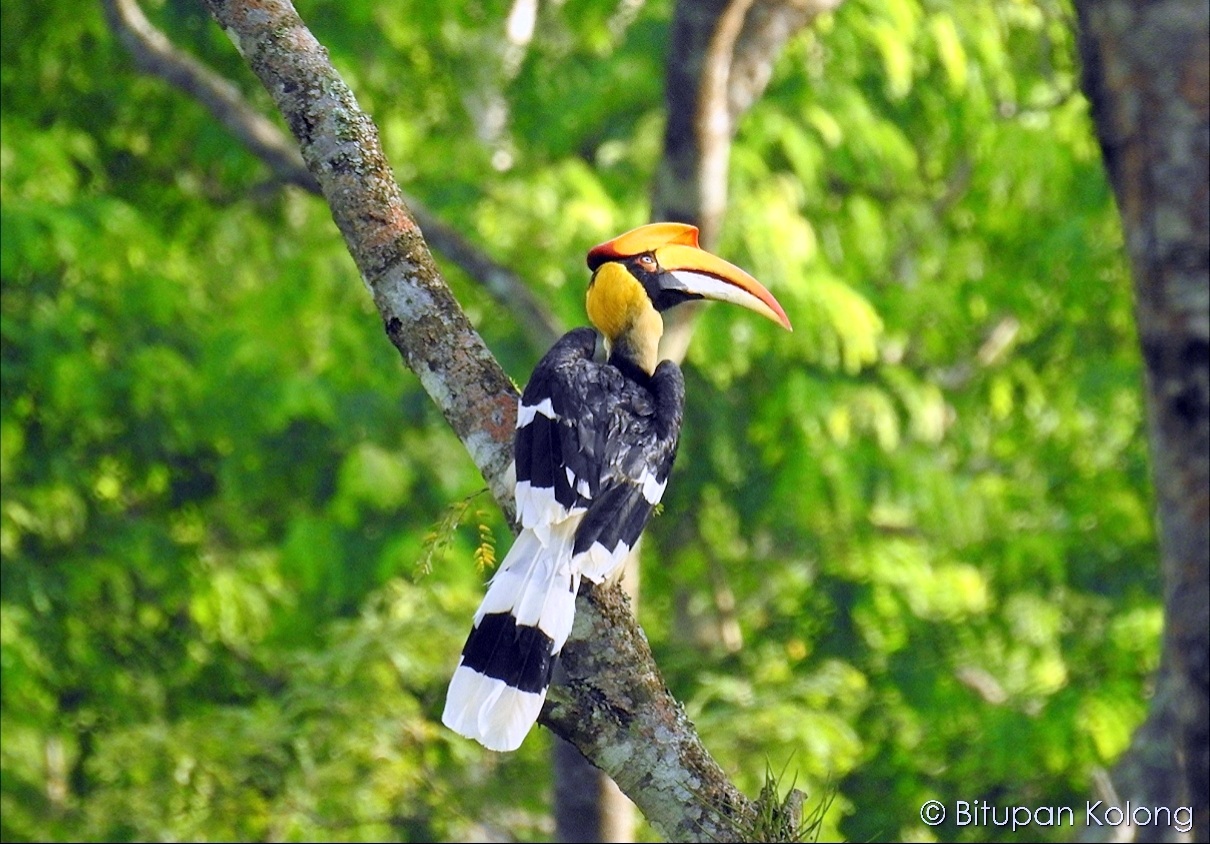
It has a considerable population of Elephants. Apart from the Elephants, Sloth Bear, Himalayan Black Bear, Tiger, Leopard, Indian Bison, Flying Squirrel, Malayan Giant Squirrel, Barking Deer, and Capped Langur, etc can be sighted inside the park. There is also a diverse bird population with almost 370 species of birds in Nameri. Some of the famous birds found here are White Winged Wood Duck, Great Pied Hornbill, Wreathed Hornbill, Rufous Necked Hornbill, Black Stork, Hill Myna, Greater Spotted Eagle, and King Vulture, etc.
There are many venomous and non-venomous snakes found in Nameri National Park. Some of them are King Cobra, Pit Viper, Russell’s Viper, Burmese Python, Rat Snake, and Banded Krait, etc.
There are several activities that you can do in Nameri National Park. They are catch and release Angling of Mahaseer Fish in Jia-Bhorali, Boat Safari, Elephant Safari, Forest Walk and River Rafting to see beautiful birds and animals near the river bank. There is no Jeep safari available in the park and the best way to explore the park is on a boat.
Best Time to Visit Nameri National Park
November to March is considered as the best time to visit Nameri National Park.
Dibru-Saikhowa National Park
Dibru-Saikhowa is a beautiful national park situated in Assam’s Tinsukia district. It is a combination of two reserve forest called Dibru and Saikhowa. Dibru-Saikhowa is also one of the 19 bio-diversity hotspots in the world and a biosphere reserve. This national park in Assam is the largest Salix swamp forest in Northeast India.
The park covers a total area of 340 square kilometers with semi-wet evergreen forest, tropical moist deciduous forest, bamboo, canebrakes, and grassland. The river Brahmaputra and the foothills of Arunachal Pradesh to its north serve as its natural border and Dibru and Patkai hills in the south. The park is divided into nine different zones out of which one is a wetland and others are dense forests.
Dibru-Saikhowa National Park was primarily meant for the conservation of the White Winged Wood Duck in its natural habitat. The park is also known for it’s bright looking wild Feral Horses. Hoolock Gibbon, Capped Langur, Slow Loris, Tiger, Elephant, and Gangetic River Dolphins are some of the rare and endangered mammals of Dibru-Saikhowa National Park.
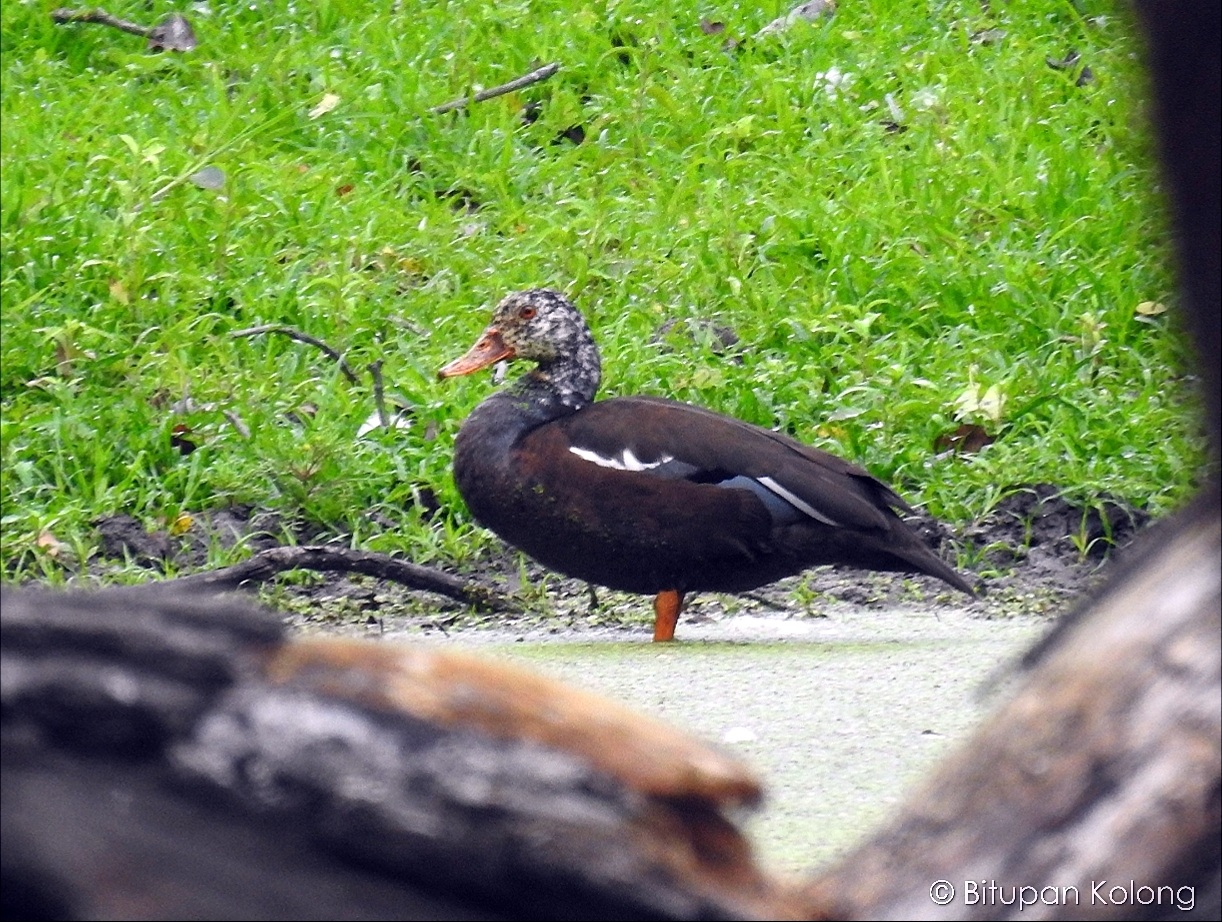
This place is also a Mecca for birders because it is a breeding place for many endangered endemic as well as migratory birds. Here you can find White Winged Wood Duck, Pallah’s Fishing Eagle, Spot Billed Pelican, White Bellied Pelican, Swamp Francolin, Geyleg Goose, Brahmini Duck, etc. About reptiles, only eight different species of snakes and eight turtle species have been recorded so far.
Visitors need permission to enter this national park and there is no jeep safari or elephant safari available inside the park. The best way of exploration is on a local boat and it can be arranged with ease.
Best Time to Visit Dibru-Saikhowa National Park
November to March is considered as the best time to visit Dibru_Saikhowa National Park. During this period a lot of migratory birds can be sighted inside the park.
Rajiv Gandhi Orang National Park
Located in the Darrang and Sonitpur district of Assam, Orang National Park is a safe haven for a wide variety of flora and fauna. This park is also known as a Mini Kaziranga due to the striking similarities between both the parks. It is not so famous like other national parks in Assam but it is as good as Kaziranga National Park to sight One-horned Rhinoceros, Elephants, and Tigers. According to the last Tiger census, Orang has the highest density of the big cats in India with 35 tigers per 100 square kilometers.
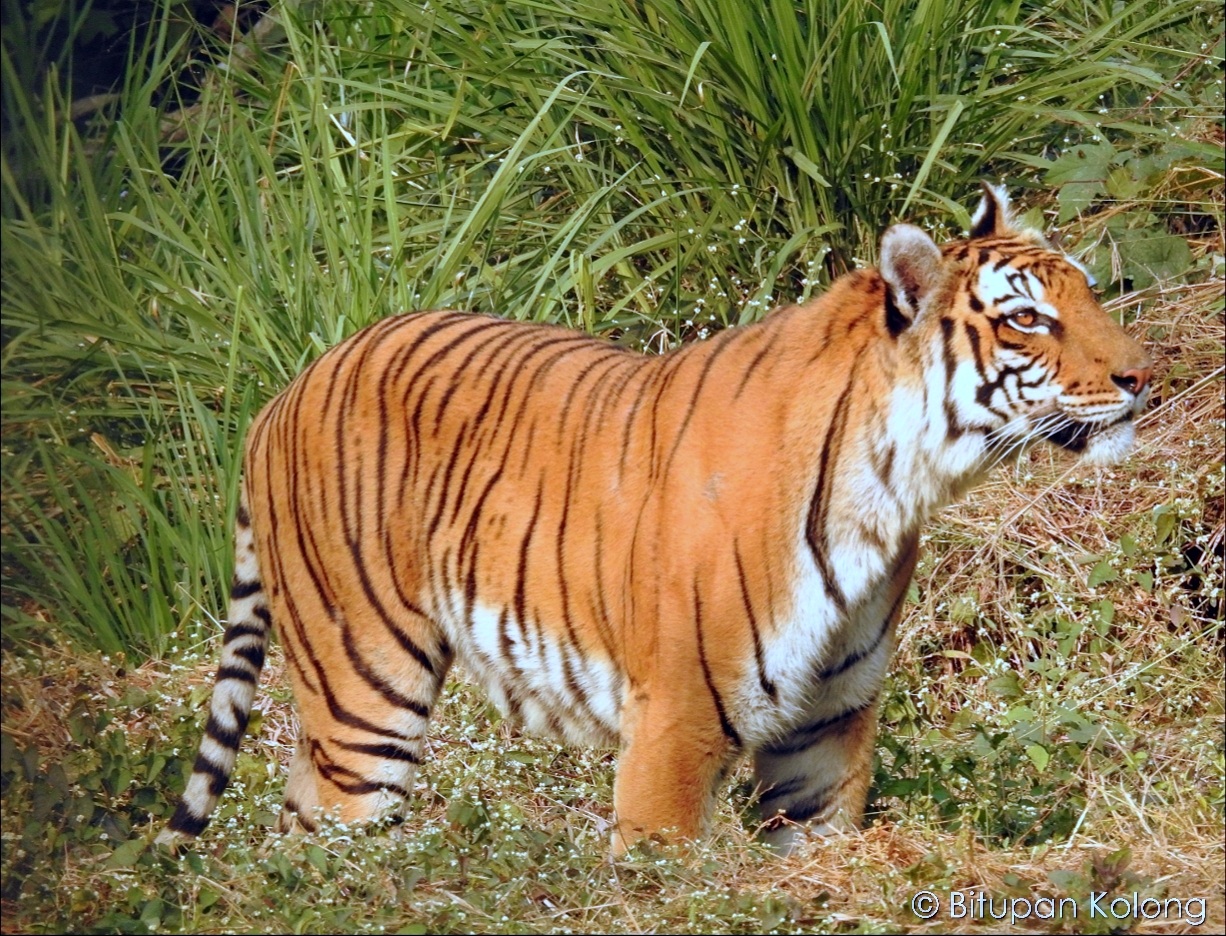
This national park is spread over 78.81 square kilometers with swampy, and wooded areas on the northern bank of River Brahmaputra. The park’s dense forest with tall trees and high grasslands is an ideal place for the Tigers and other wild animals like Elephants and One-horned Rhinoceros. There are about 12 to 15 man-made ponds inside the park which signifies that this place was earlier inhabited by the Orang community. There is speculation that they may have left this place due to some epidemic.
You must visit Rajiv Gandhi Orang National Park to see One-horned Rhinoceros, Royal Bengal Tiger, Asiatic Elephants, Leopard, Wild Boar, Hog Deer, Wild Buffalo, Otter, Gangetic River Dolphins, etc. For birders, the park has got Lesser Adjutant Stork, Greater Adjutant Stork, Brahminy Duck, White Pelican, Bengal Florican, Woodpecker, etc.
The best way to explore this park is on Elephant back. There is also an Elephant training camp on the bank of the Pasnoi river, where young elephants are trained and looked after.
Best Time to Visit Rajiv Gandhi Orang National Park
November to April is the best time to visit Orang National Park.
The Lonely Planet has also conferred Assam with “Best Destination for Wildlife in India” award at the recently held 8th Lonely Planet India Magazine Travel Awards 2019. Here are some interesting facts about the sanctuaries and national parks in Assam which made her an award-winning destination,
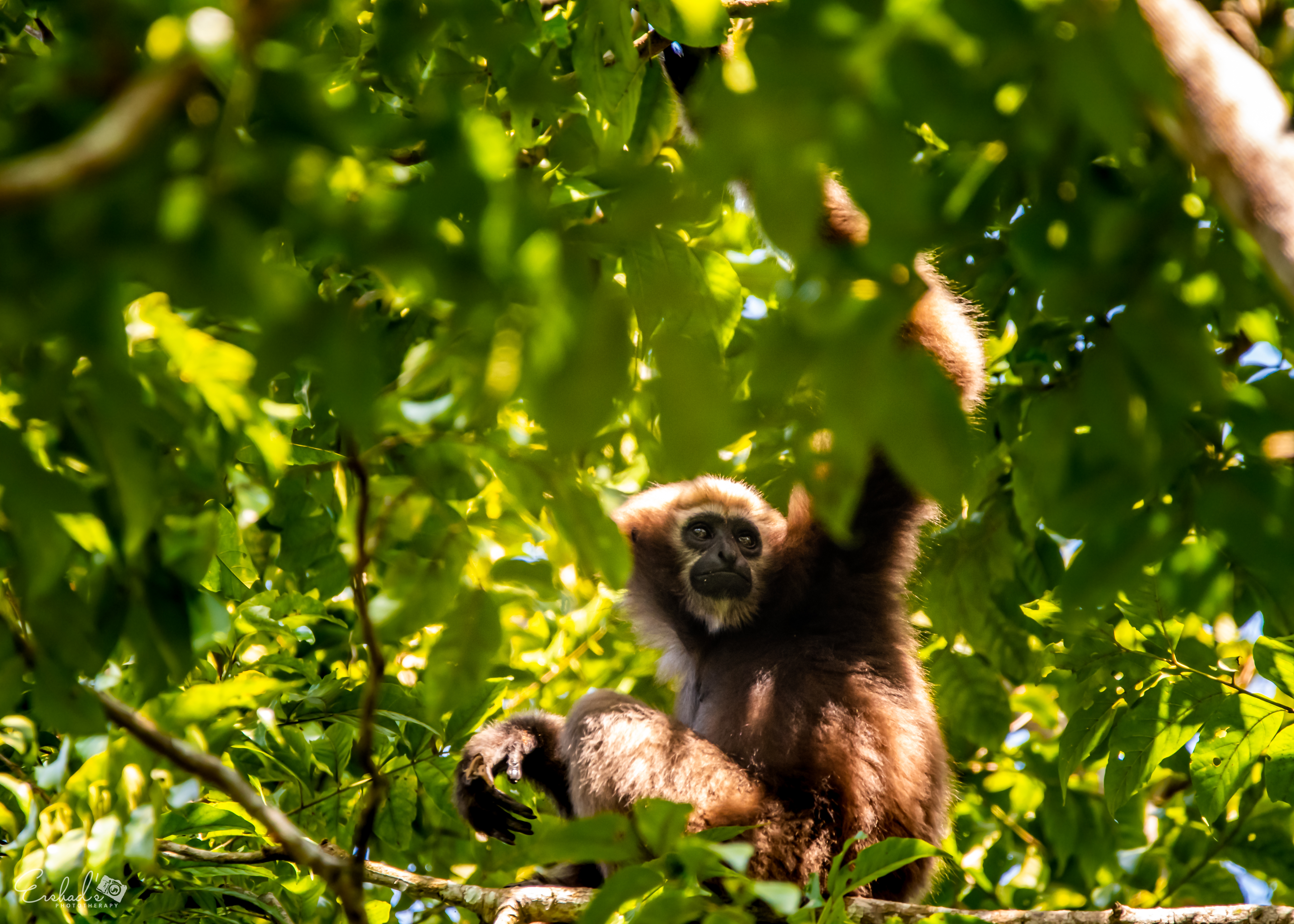
- The national parks of Assam have conserved the One-horned Indian Rhinoceros, Pygmy Hog and Tigers from near extinction.
- It has the largest population of Water Buffalo and One-horned Rhinoceros in the world.
- Kaziranga National Park is home to two-thirds of the world’s remaining One-horned Rhinoceros.
- It has the highest diversity of birds in India with around 820 species.
- Assam is home to India’s only Gibbons – The Hoolock Gibbons and Northeast India’s only nocturnal primate – the Bengal Slow Loris.
- Two of the largest snakes in the world, the Reticulated Python and Rock Python are found in Assam.
- Assam is home to the maximum number of big cats in India which includes Tiger, Leopard, Clouded Leopard and Black Panther.
- Dibru-Saikhowa National Park itself is also home to the largest species of wild cats in India; it includes Jungle Cat, Golden Cat, Fishing Cat, and Leopard Cat.
- It is the last refuge to highly endangered species like the Pygmy Hog and White Winged Wood Duck which is also a state bird of Assam.
- Orang National Park has the highest density of Tigers nationally with 35 tigers per 100 square km.
Best time to visit the National Parks in Assam
November to March is the best time to visit the wildlife reserves and the national parks in Assam. Almost all the parks reopen by the end of October and it remains open till mid-May (depending upon the monsoon rains). However, the winter months of November, December, January, and February experiences the highest number of visitors. These four months are considered best for jungle safaris and bird-watching tours in any of the national parks in Assam.
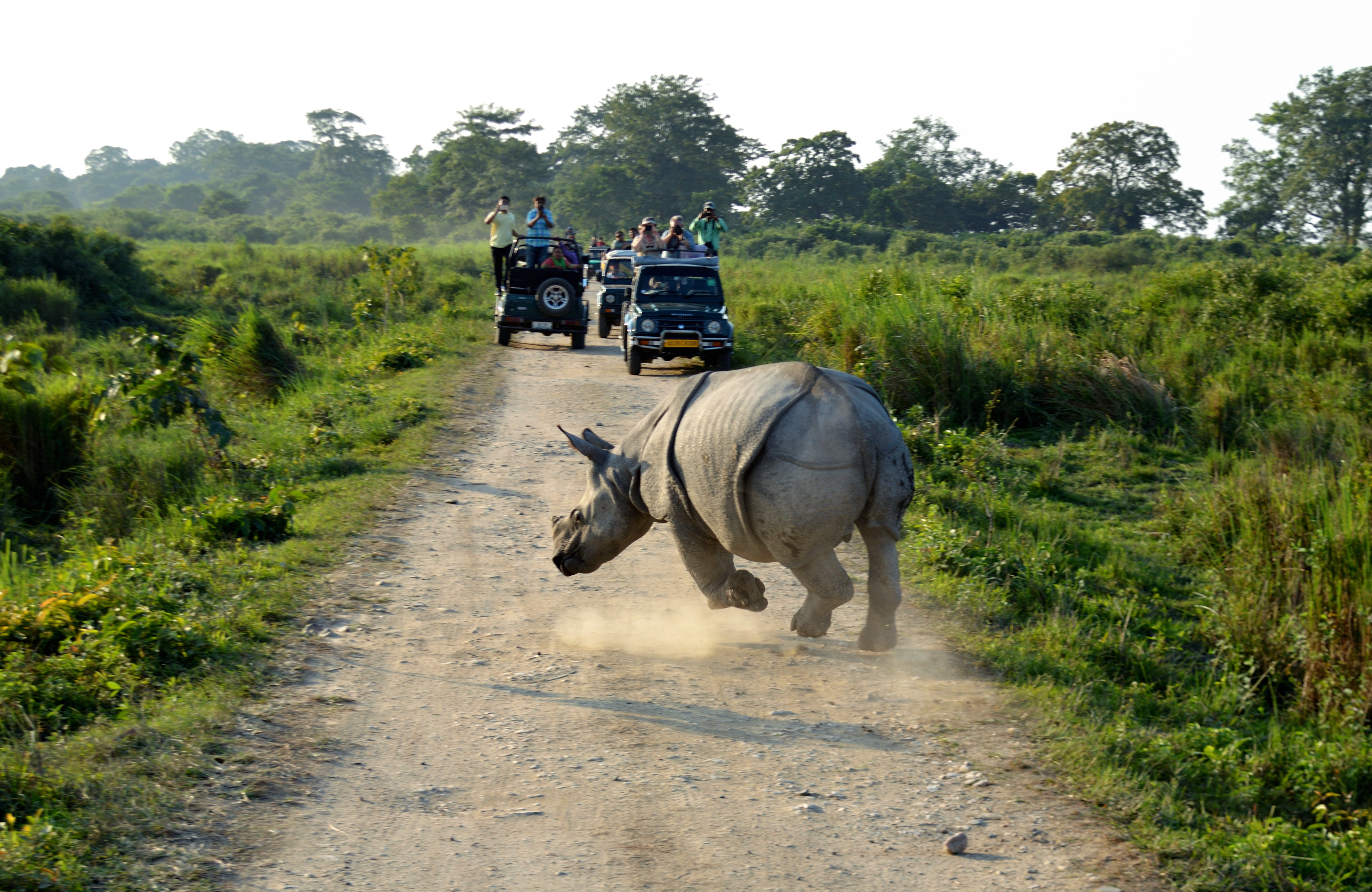
Now that you know about all the national parks in Assam so which one will you visit at first? You can contact us at info@kitemanja.com or simply fill in the contact us form below to know more about traveling in Assam and its national parks.

